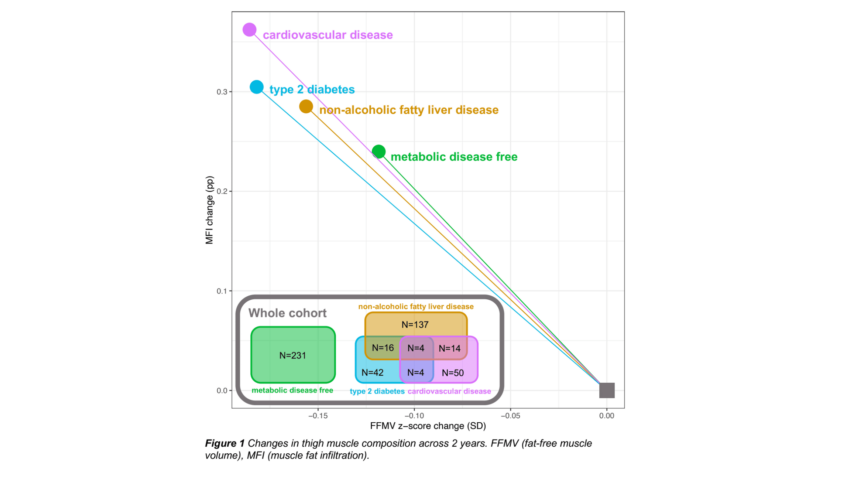
AMRA Medical will present “Two years of aging – initial results on changes in muscle composition in the UK Biobank imaging study” at SCWD, scheduled June 24-26, 2022.
AMRA Medical will present the results of their recent study using magnetic resonance imaging (MRI) to measure muscle composition changes in individuals with metabolic disorders at the 2022 SCWD Conference. AMRA’s research shows they can observe significant changes in muscle composition measurements after two years of aging. The results indicate that individuals with metabolic disorders experience more rapid wasting and that diseases may have a disease-specific wasting profile. Researchers can use AMRA’s muscle-monitoring biomarkers to further study the progression, severity, and risks of metabolic diseases. This research could also have clinical implications, which could further enhance the utility of AMRA’s currently available clinical service offerings that help monitor an individual’s health and wellness.
The aim of this study was to describe changes in muscle composition in metabolic disease-free individuals and common metabolic disorders including type 2 diabetes (T2D), cardiovascular disease (CVD), and non-alcoholic fatty liver disease (NAFLD).
The study included 1,265 participants from the UK Biobank who were scanned twice approximately 2 years apart using a 6-minute MRI protocol. Using AMRA® Researcher, images were analyzed for thigh fat-free muscle volume (FFMV) and muscle fat infiltration (MFI) — a biomarker associated with all-cause mortality1. The participants were divided into cohorts based on metabolic disease. While no group had a significant weight change over two years, the researchers observed significant changes in muscle composition. Individuals with a metabolic disease had more rapid muscle wasting process compared with metabolic disease-free individuals. Notably, the rate of muscle wasting was distinct for each group, with CVD being associated with the most rapid muscle wasting profile followed by T2D.
Eric Converse, CEO at AMRA, commented: “These results are particularly exciting not only because of how they can advance metabolic disease research but also because they continue our path to proving the clinical utility of mapping the trajectory of an individual’s muscle composition. For instance, for an individual with T2D or cardiovascular disease, physicians could longitudinally assess their muscle composition using AMRA’s recently regulatory-cleared clinical service offering and determine if the results align with or differ from the wasting profile of others that are similar to them. This information could help inform or develop longevity plans for an individual.”
To hear more about the study results and to connect with AMRA’s team, SCWD conference attendees can observe the presentation titled: Two years of aging – initial results on changes in muscle composition in the UK Biobank imaging study.
1 Linge, Jennifer, et al. “Adverse muscle composition predicts all-cause mortality in the UK Biobank imaging study.” Journal of cachexia, sarcopenia and muscle 12.6 (2021): 1513-1526.